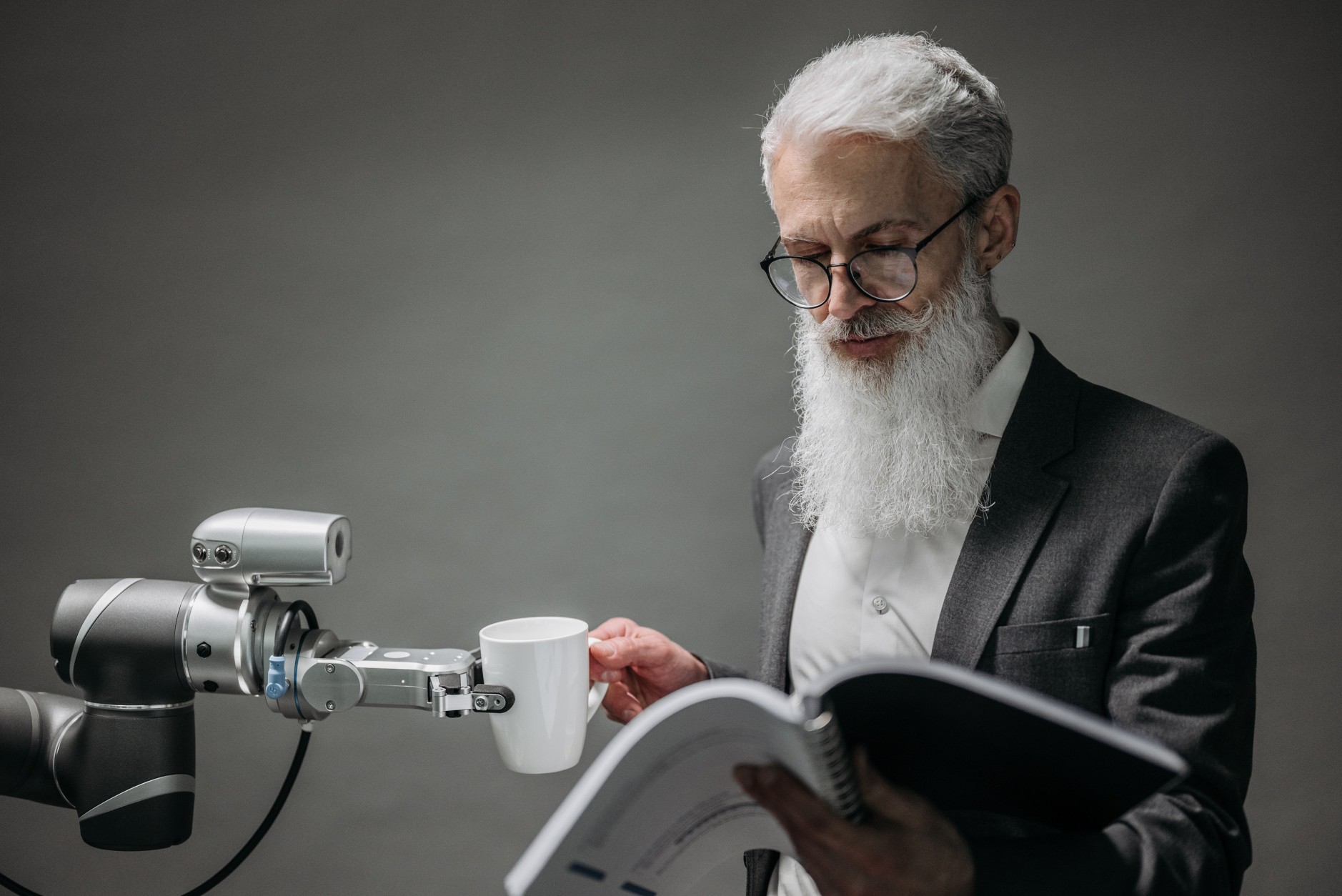How AI Trends Today Can Predict Future Robotics Trends

Ours truly is the great age of technology. Innovations are happening so fast that it can be difficult for even professionals to keep up. However, if you want to understand where the future of robotics is headed, all you need to do is explore today’s trends in artificial intelligence (AI).
Indeed, emerging AI technologies are often a harbinger of new robotics innovations, particularly as mechanical robots become increasingly “intelligent.”
A Perfect Union: AI and Robotics
In many ways, AI technologies and robotics are close cousins. They are highly interconnected innovations that often work in coordination to extend the capacities of human functioning to once unimaginable heights.
A principal function of AI technologies in business, for example, is to galvanize productivity and functionality in working environments while simultaneously reducing or eliminating human error. Robotics serves a similar function, enabling automation in the workplace to boost speed, accuracy, and flow processes across industries.
Both AI and robotics, in other words, accomplish what people cannot in that they can work longer, harder, and faster than entire teams of human workers. And, unlike humans, they can do this without getting sick, tired, or sloppy.
Given their similarity in purpose and functional capacity, it’s little wonder, then, that innovations and trends in AI should presage related developments in robotics.
AI and the Rise of the “Intelligent” Robot
Though there is much overlap between AI and robotics technologies, there are also some important differences, at least in regard to the original purposes of the technologies. While AI systems were primarily designed to serve advanced analytical purposes, collecting and analyzing literally billions of data points in mere seconds, robotics’ purposes were largely mechanical.
Robots, for instance, were originally engineered to operate in spaces inaccessible to humans to perform physical feats, such as delicate microscopic surgery, that the human body simply cannot.
However, today, the original purposes for which AI and robotics were intended are beginning to overlap. The analytical and predictive capacities of AI, for instance, are being developed for robotics systems as well.
This can be seen, for example, in the emergence of smart factories that deploy intelligent robots to anticipate operational needs and devise and implement response strategies. The result is greater agility and responsiveness in industrial operations.
Automated Workflows
One of the most significant advantages of AI technologies lies in their capacity to automate processes that humans once performed manually. This can include everything from automated customer screening and patient triage using chatbots in healthcare providers’ online platforms.
By automating processes using intelligent technologies in this way, end users are able to access on-demand support, including accessing help outside of normal business hours. In addition, AI automation frees human workers to attend to tasks that cannot be automated. This, in effect, doubles an organization’s work productivity.
The same trends are emerging in robotics, with intelligent machines automating home and work duties that once fell to humans. Today, for instance, a host of robotics technologies is being developed to automatically perform everything from common household chores to invasive surgeries.
Blurring the Line Between Humans and Machines
The true power of AI technologies may well reside in the potential of machine learning, the capacity for technologies to improve and adapt with every task it performs. This means that, over time, the technology’s capacity may exceed the intentions and expectations of the programmer.
AI systems, for instance, can recognize patterns that are simply beyond the scope of even the most brilliant of human minds. This occurs in no small measure because of the immense volumes of data AI can access and analyze, quantities of data that it would take a human many lifetimes to parse manually.
The same real-world, analytical capacities of AI are being integrated into robotics as a means of enabling highly complex functionalities that appear almost indistinguishable from human functioning. For instance, the development of autonomous vehicles is contingent upon the capacity of machines to gather, analyze, and translate untold amounts of data into intelligent mechanical responses in order to safely pilot the vehicle to the desired destination. This is the power of AI analytics transformed into robotics automation.
The Takeaway
We are truly living in a brave new world of technology. It can be difficult to imagine what groundbreaking new innovations will emerge to transform our ordinary lives. Nevertheless, if you want to understand how robotics technologies are likely to evolve in the future, the first and best place to look is at the AI trends emerging today. From automation to machine learning, both AI and robotics are helping workplaces to become more efficient, productive, and profitable than ever before. At the same time, they are also helping humans to live better lives by relieving them of mundane tasks and enabling them to achieve greater accuracy, efficiency, speed, and productivity in the work they do than ever before.
Thanks for helping to keep our community civil!
This post is an advertisement, or vandalism. It is not useful or relevant to the current topic.
You flagged this as spam. Undo flag.Flag Post

